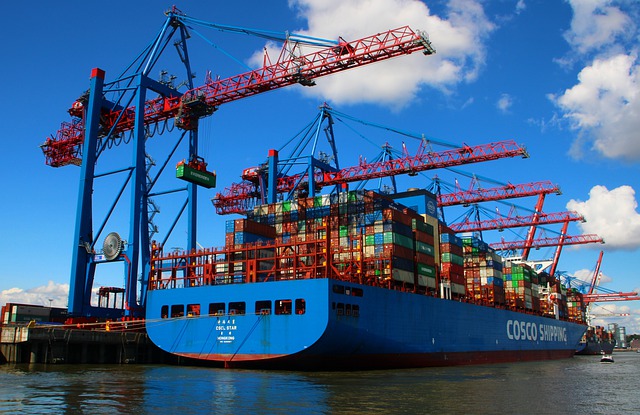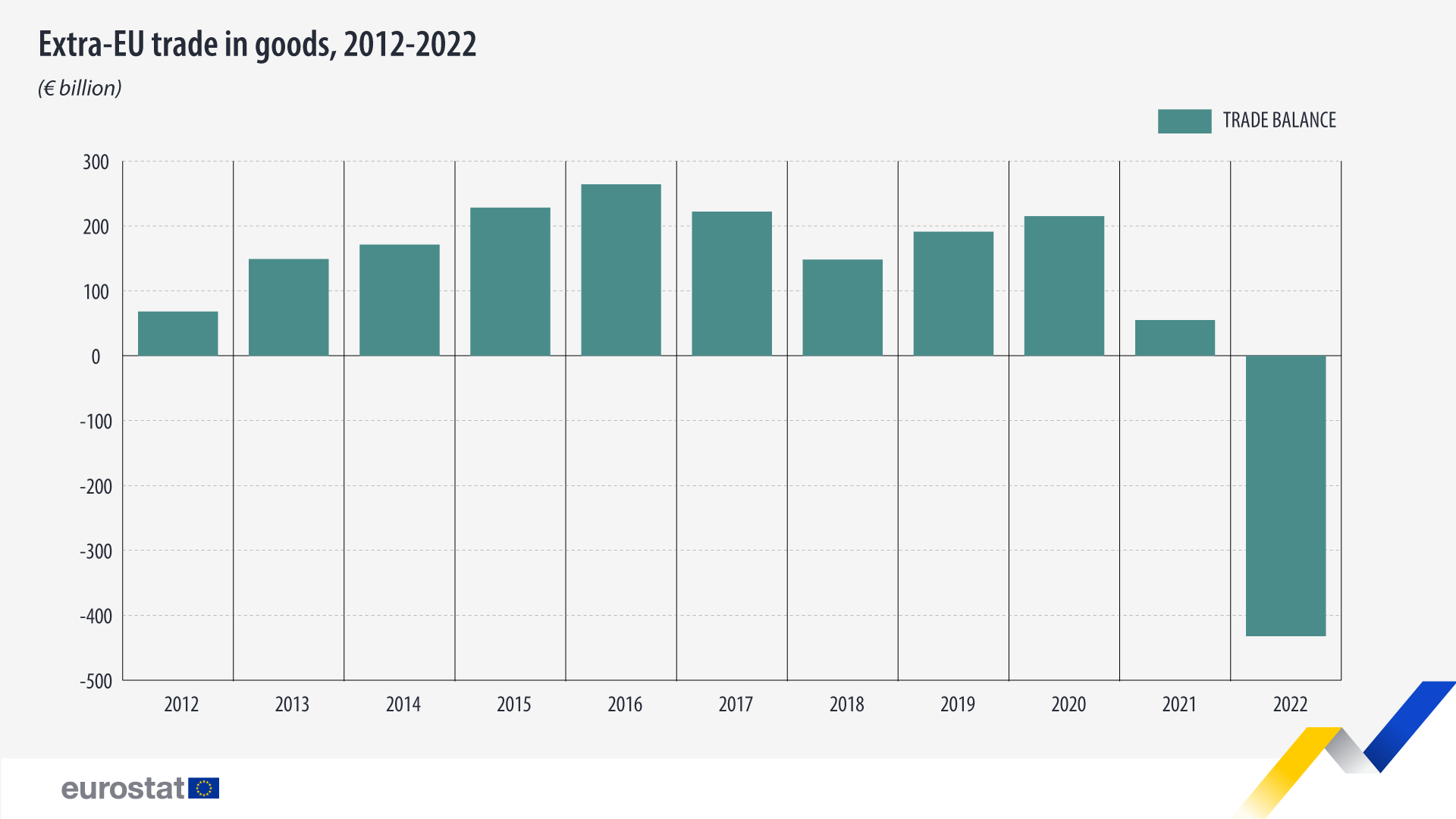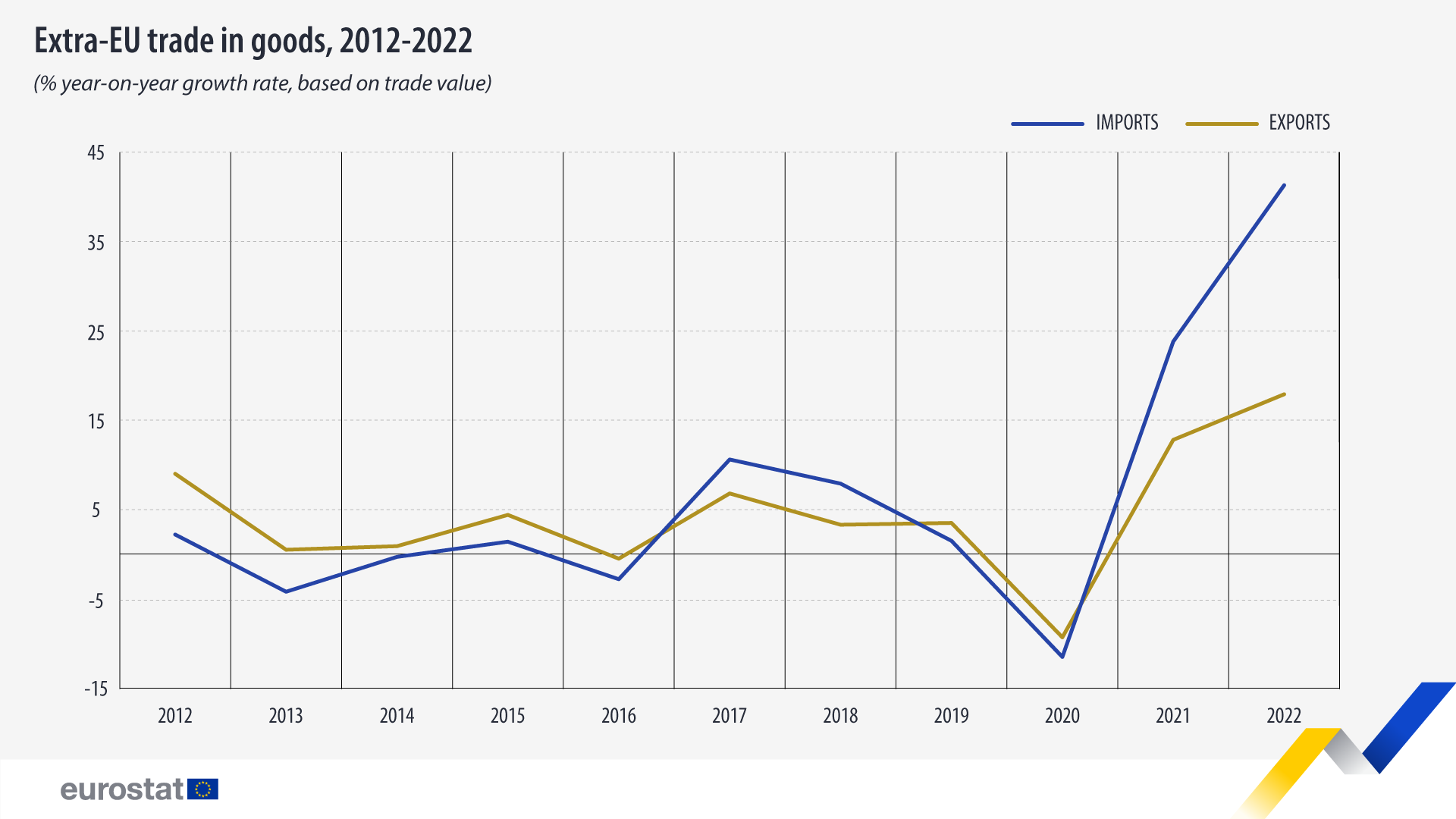April 4, 2023
In 2022, the EU trade in goods balance registered a large deficit of €432 billion, reaching its lowest level since the start of the time series in 2002. The deficit was due, in particular, to a steep rise in the value of energy imports, which started towards the end of 2021 and continued through most of 2022.
This information comes from data on international trade in goods published recently by Eurostat. This article presents only a handful of findings from the more detailed Statistics Explained article.
Also in 2022, driven by increasing prices, extra-EU imports (+41%) and exports (+18%) reached their highest year-on-year growth rates recorded over the last ten years.
EU members reliant on the European single market
Data show that the EU’s internal market takes centre stage in EU countries’ trade of goods, although the proportion of intra-EU and extra-EU flows in total trade in goods varied considerably, reflecting, to some degree, historical ties and geographical location.
Among the EU members, the highest share of intra-EU imports was recorded in Luxembourg (90% of its total imports), while the highest share for intra-EU exports was recorded in Czechia (82% of its total exports).
On the other hand, the lowest share of intra-EU imports was recorded in Ireland (35% of its total imports), which is mainly because its primary trade partner is the United Kingdom. Additionally, the lowest share of intra-EU exports was reported in Cyprus (26% of its total exports).
In 2022, the Netherlands imported a large share of goods from extra-EU countries (only 39% of its imports were intra-EU) and exported them within the EU (71% of its exports were intra-EU).
Source: Eurostat
Legal Notice: The information in this article is intended for information purposes only. It is not intended for professional information purposes specific to a person or an institution. Every institution has different requirements because of its own circumstances even though they bear a resemblance to each other. Consequently, it is your interest to consult on an expert before taking a decision based on information stated in this article and putting into practice. Neither Karen Audit nor related person or institutions are not responsible for any damages or losses that might occur in consequence of the use of the information in this article by private or formal, real or legal person and institutions.









